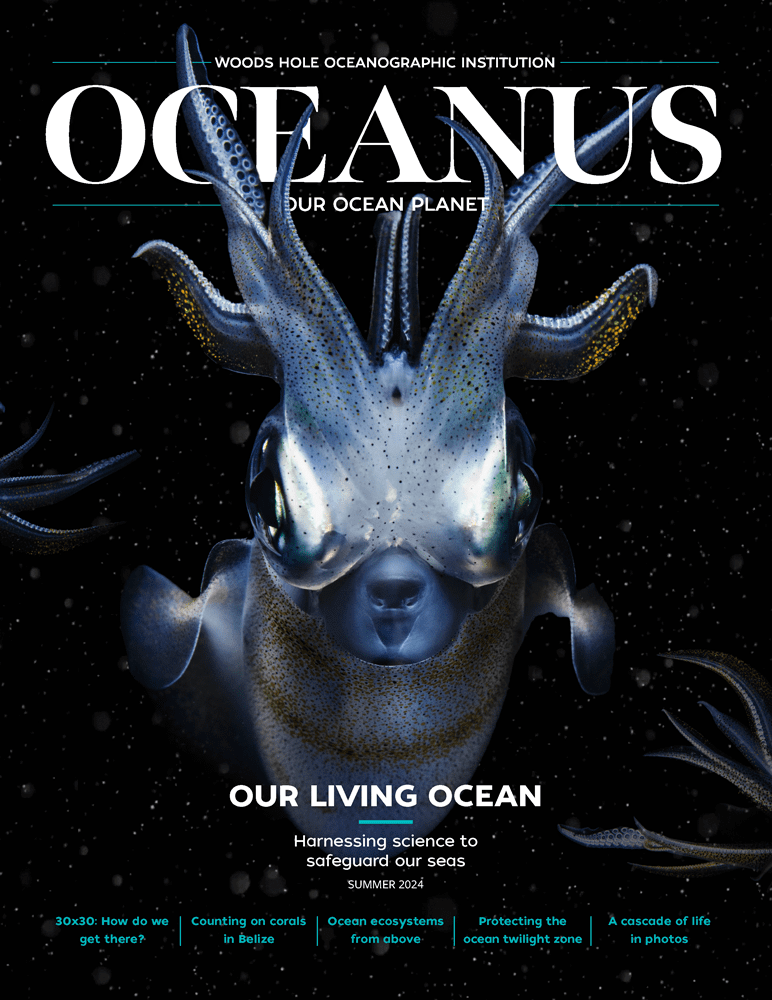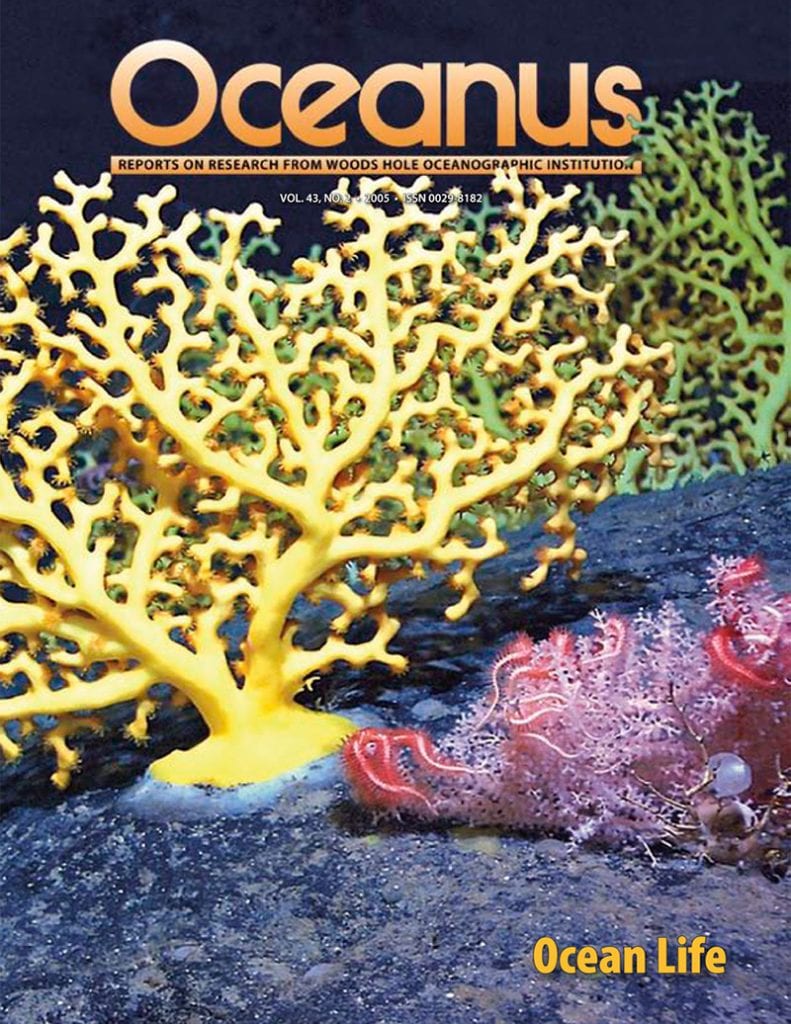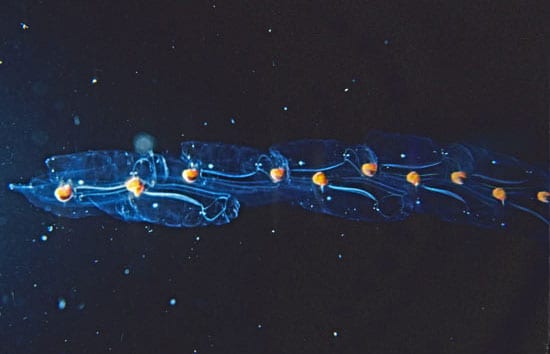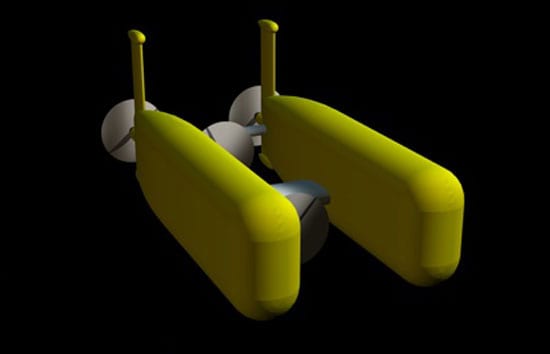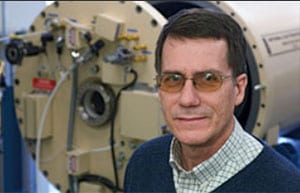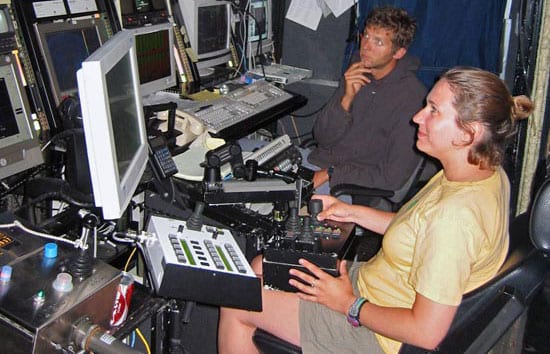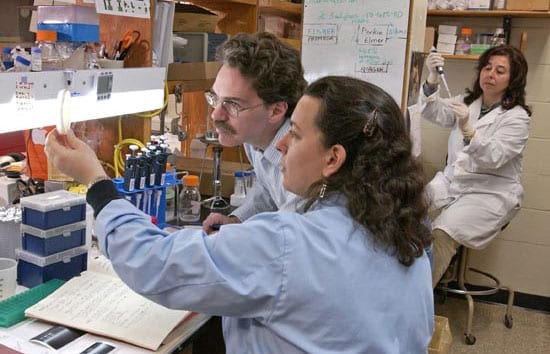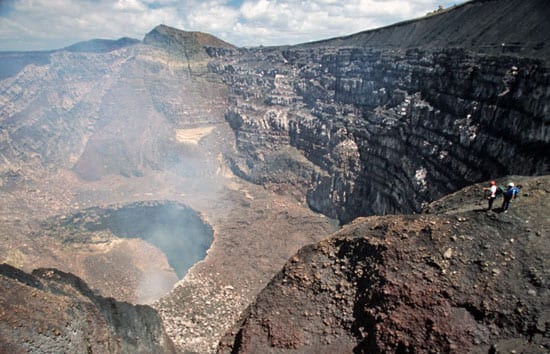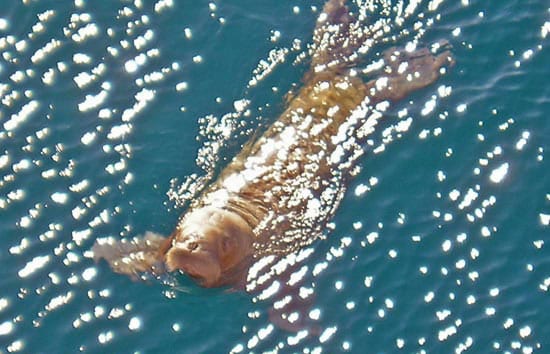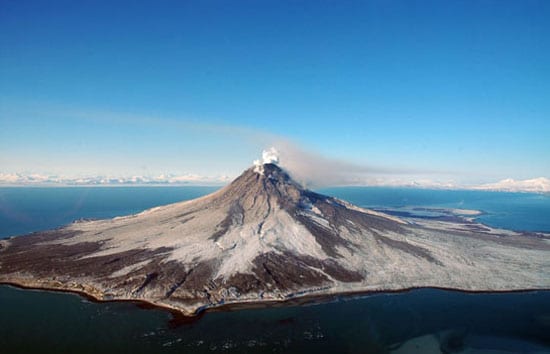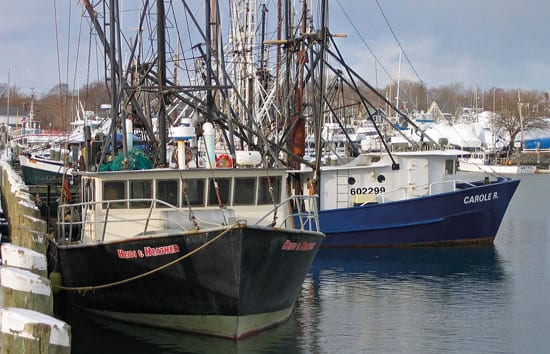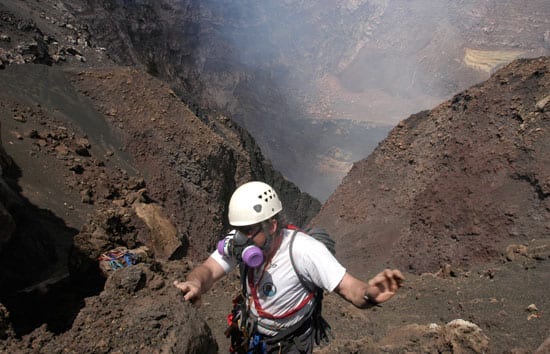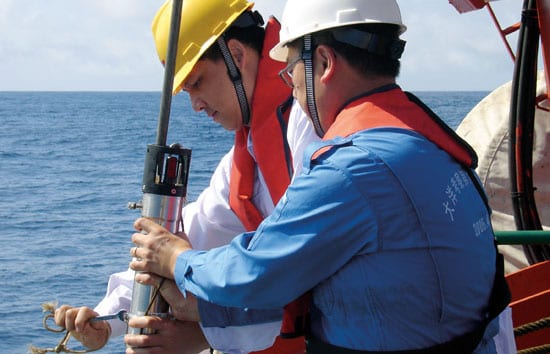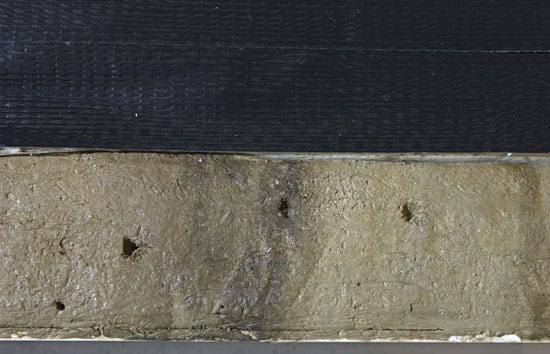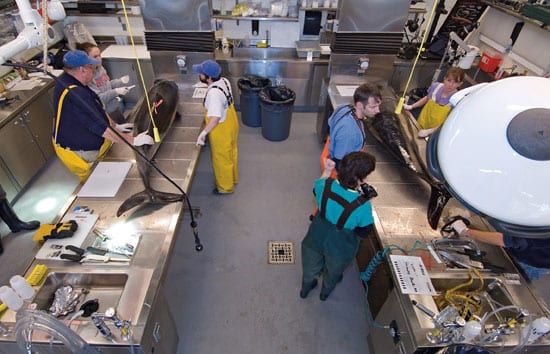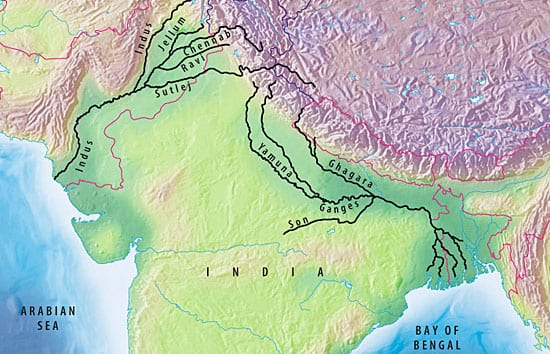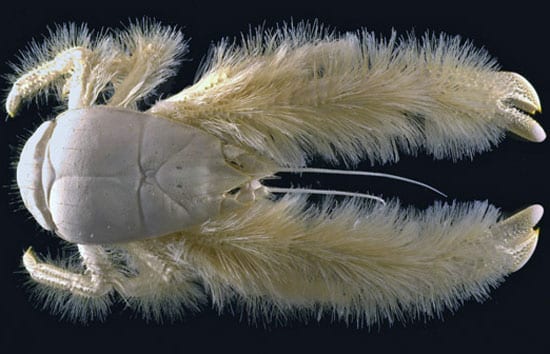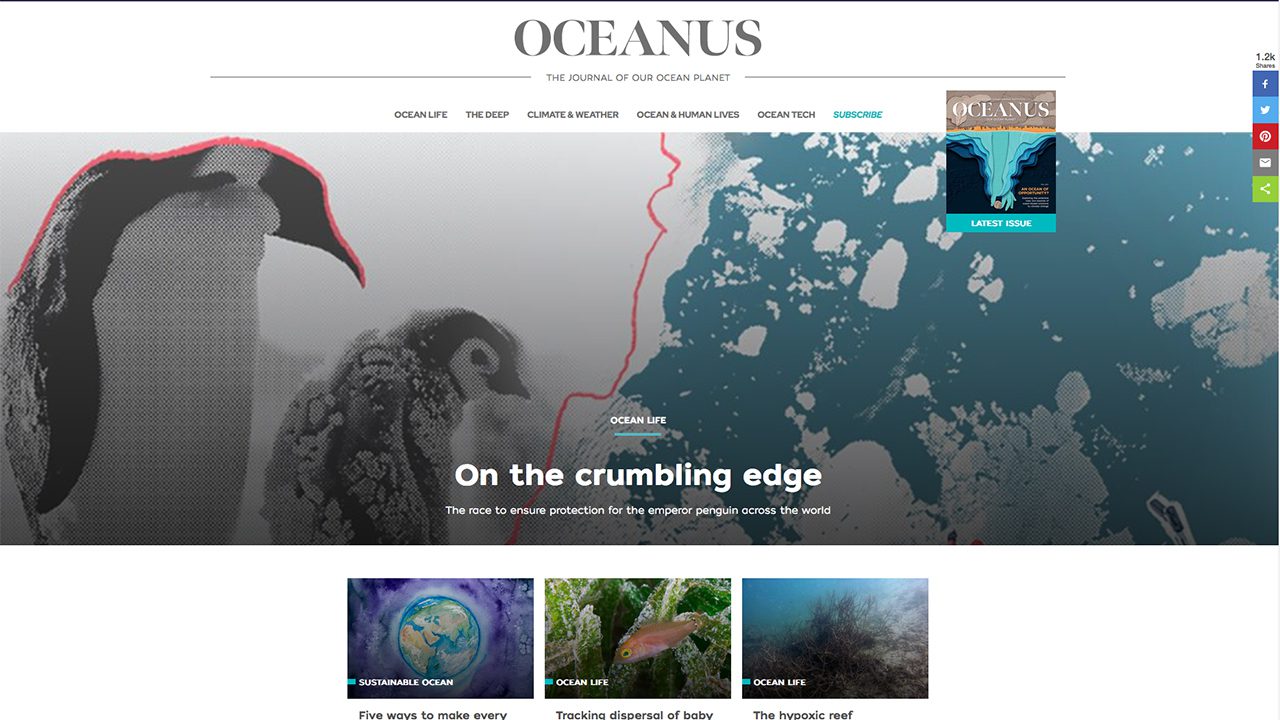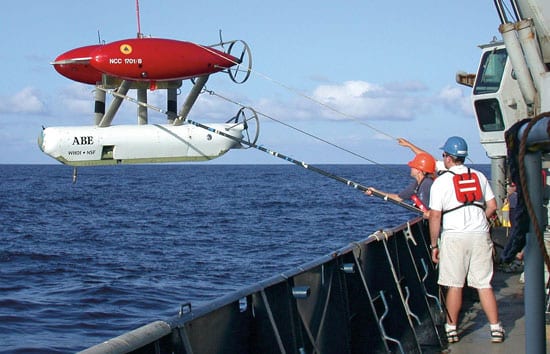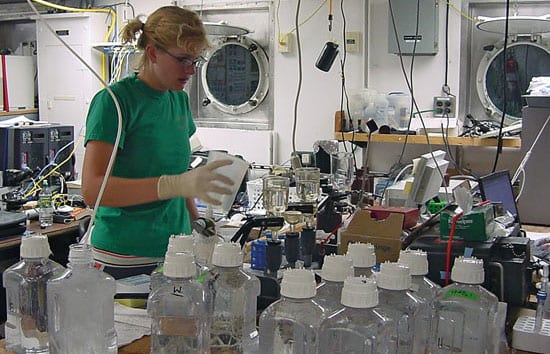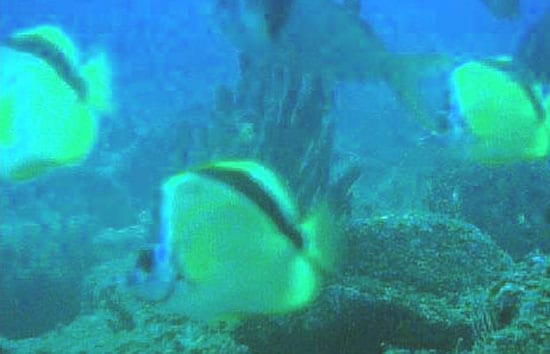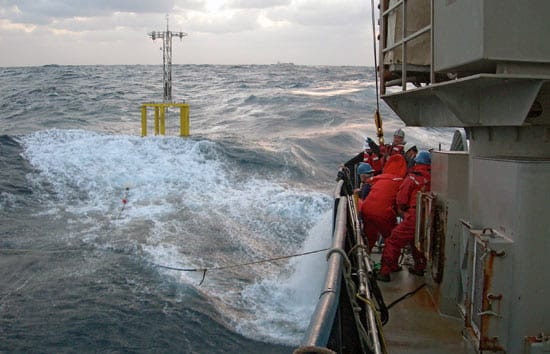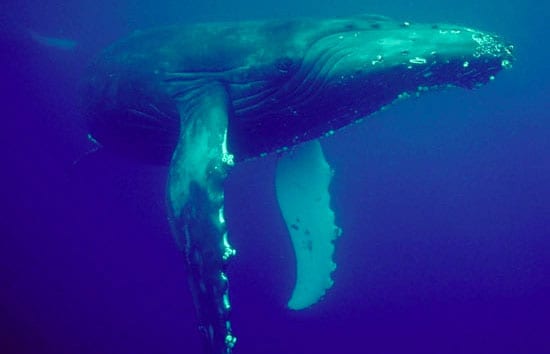Oceanus Online Archive
Transparent Animal May Play Overlooked Role in the Ocean
Salps don’t get much respect. They’ve been around for millions of years, but hardly anyone even knows they exist.
Even many who have heard about these transparent, jelly-like creatures consider them […]
Read MoreNew Hybrid Deep-sea Vehicle Is Christened Nereus
Nereus—a mythical god with a fish tail and a man’s torso—was chosen Sunday (June 25) in a nationwide contest as the name of a first-of-its-kind, deep-sea vehicle under construction at […]
Read MoreNew WHOI Class Helps Students Communicate with Public
There’s a lot of giggling outside room 304 at Mullen-Hall Elementary School in Falmouth. Mass., as 24 fourth-graders wait for their classroom to be transformed into the deep ocean. They […]
Read MoreWHOI President and Director Robert Gagosian Steps Down
Robert B. Gagosian announced June 5 that he plans to step down as president and director of Woods Hole Oceanographic Institution, a position he has held for 12 years.
Effective July […]
Read MoreA Laser Light in the Ocean Depths
Graduate student Anna Michel is adapting laser technology to the murky fluid environment and crushing pressures at depths of 11,000 feet. The goal is to develop an instrument that can directly measure the many elements spewing from hydrothermal vents just as they emerge from Earth?s crust.
Read MoreThe Chicken and the Tern
WHOI scientists find that the dramatic difference comes down to three amino acids on a single protein.
Read MoreInto the ‘Mouth of Hell’
Ken Sims peers over the rim of Masaya Volcano and looks 2,000 feet (600 meters) down into the smoking crater lined with rows of jagged rocks that jut up like […]
Read MoreAbandoned Walrus Calves Reported in the Arctic
Researchers on an oceanographic voyage in the Arctic Ocean report, for the first time, baby walruses unaccompanied by mothers in areas far from shore and over deep water, where they likely could not survive. The phenomenon was coincident with movement of warm water into Arctic basins and subsequent melting of the sea ice that walruses normally utilize as resting platforms.
Read MoreBuilding a Computer Model to Forecast Red Tides
The algae Alexandrium fundyense are notorious for producing a toxin that accumulates in shellfish such as clams, mussels, and oysters, leading to paralytic shellfish poisoning in humans. The microscopic plants […]
Read MoreTo Catch an Erupting Volcano
Augustine, an island volcano 170 miles southwest of Anchorage, Alaska, began erupting in December 2005. By February, Uri ten Brink of the U.S. Geological Survey (USGS) in Woods Hole had […]
Read MoreDo Fishing Regulations Lead to More Accidents?
Fishermen have argued that regulations about when and where they can catch fish have caused more sinkings and fatal accidents at sea. But a new statistical analysis by Woods Hole researchers has found no hard evidence to support that argument.
Read MoreNoxious Gas from the Mouth of Hell…
The hidden world of salps
OFF THE ANTARCTIC PENNISULA—Biologists Larry Madin (WHOI) and Patricia Kremer (U. Connecticut) led a month-long cruise in January 2006 aboard the ice-strengthened ship L.M. Gould […]
Read MoreA ‘Book’ of Ancient Sumatran Tsunamis
Exactly one year after the devastating 2004 Indian Ocean tsunami, Jian Lin found himself on a Chinese research vessel off Sumatra, floating above the epicenter of the seafloor earthquake that […]
Read MoreWorlds Apart, But United by the Oceans
Jian Lin came of age in an era of both geological and political seismic shifts in China, experiencing the deadliest earthquake in the 20th century in Tangshen in 1976 and the Cultural Revolution in the 1970s. Then he immigrated to America and came full circle in 2005 to become the first U.S. scientist to co-lead a Chinese deep-sea research cruise.
Read MoreMass Strandings Keep New Marine Mammal Facility Busy
Woods Hole Oceanographic Institution’s new Marine Research Facility (MRF) opened its doors just in time for a terribly busy winter season. An unprecedented number of fatal dolphin and whale strandings […]
Read MoreChanging the Course of Rivers and History
Punjab means “five rivers.” The region in northern Pakistan is named for the great rivers that branch through the landscape, creating an ancient cradle of civilization and a modern agricultural […]
Read MoreLurking Benignly on the Seafloor, the ‘Yeti’ Crab is Discovered
Biologist Cindy Van Dover routinely finds new, unusual creatures when she dives to unexplored areas of the ocean in the deep-sea submersible Alvin. So she was not particularly fazed when […]
Read MoreAbout Oceanus Magazine
Oceanus explores the oceans in depth, highlighting the research and researchers at Woods Hole Oceanographic Institution in news, features, and interviews.
Read MoreABE—The Autonomous Benthic Explorer
The pioneering deep-submergence vehicle, now 10 years old, continues to demonstrate its versatility on each new cruise.
Read MoreThe Oceans Have Their Own Weather Systems
From June to September 2005, oceanographer Dennis McGillicuddy and a team of more than 20 scientists from WHOI and five other marine science labs tracked an eddy named A4. It was the oceanic equivalent of a hurricane?a huge mass of water, spinning like a whirlpool, moving through the ocean for months, stretching across tens to hundreds of kilometers, stirring up a vortex of water and material from the depths to the surface. But unlike destructive hurricanes, eddies are productive.
Read MoreLive From the Tropics, It’s an Ocean Network
With a click of his computer mouse, Scott Gallager was swimming with the fishes off the west coast of Panama. Virtual reality? Well, the fish, corals, and currents are real; […]
Read MoreThe Hunt for 18° Water
In 1959, oceanographer Valentine Worthington gave a name and an identity to a long-observed but poorly understood phenomenon of the North Atlantic. Valentine described how the interior of the Sargasso Sea contained distinct parcels of water with remarkably constant salinity, density, and temperature?roughly 18? Celsius. Decades later, his successors from Woods Hole Oceanographic Institution and eight other institutions have launched a far-reaching program to examine the formation and evolution of Worthington?s famous water and how it might influence North Atlantic climate.
Read MoreCaught in the Middle of the Marine Mammal Protection Act
In the past few years, several research projects have been halted because of conflicting interpretations of the Marine Mammal Protection Act. Energy, shipping, and naval interests claim the MMPA hampers their ability to work in the sea. Environmentalists and animal rights want the act strictly enforced. In between are scientists.
Read More